Temple of Solitary Joy (Dule si)


The Temple of Solitary Joy is one of the three surviving temples dated to the Liao Dynasty (916-1125) in China. It was first built in the Sui and Tang dynasties (581-907), and rebuilt in 984 when part of today's China was under the occupation of the Khitan Liao regime, and then went through multiple repairs in the Ming and Qing dynasties (1368-1911).
In 1930, the temple was known to China and the rest of the world because of the successive survey and coverage of it by the Japanese scholar Sekino Tadashi (1868-1935) and the Chinese architect and scholar Liang Sicheng (1901-1972).
Of the individual structures in the temple, the Main Entrance Gateway (shanmen) and the Belvedere of Avalokitesvare (Guanyin ge) are the oldest (built in 984) and outstandingly typify Liao architecture.
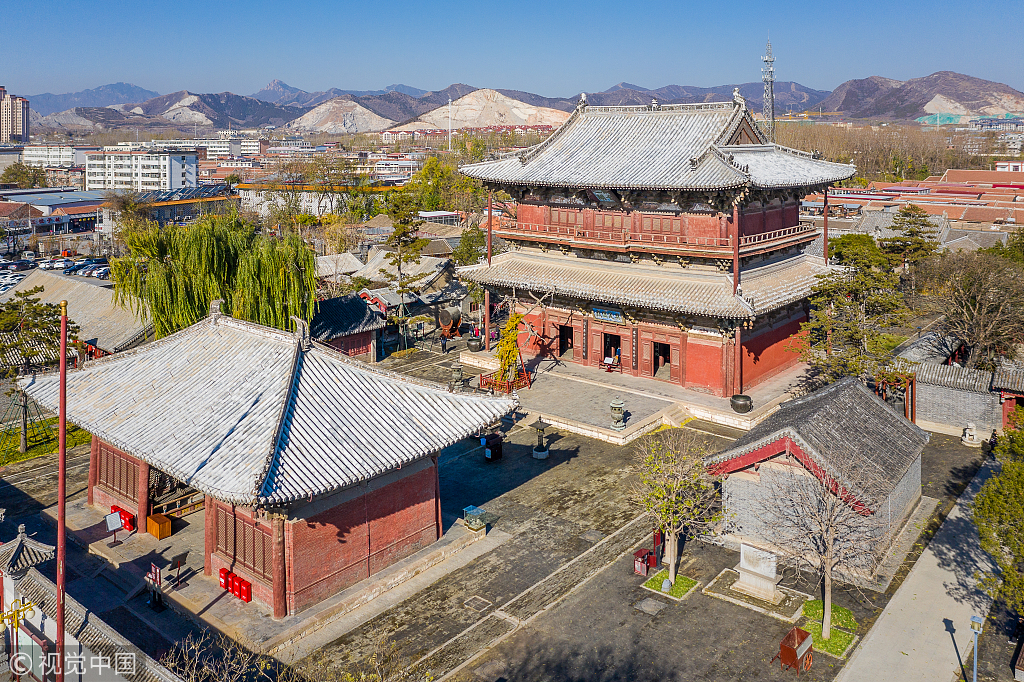
The Main Entrance Gateway
It is one of the main gateways into the temple. Built with beam columns, it has a robust dignity.
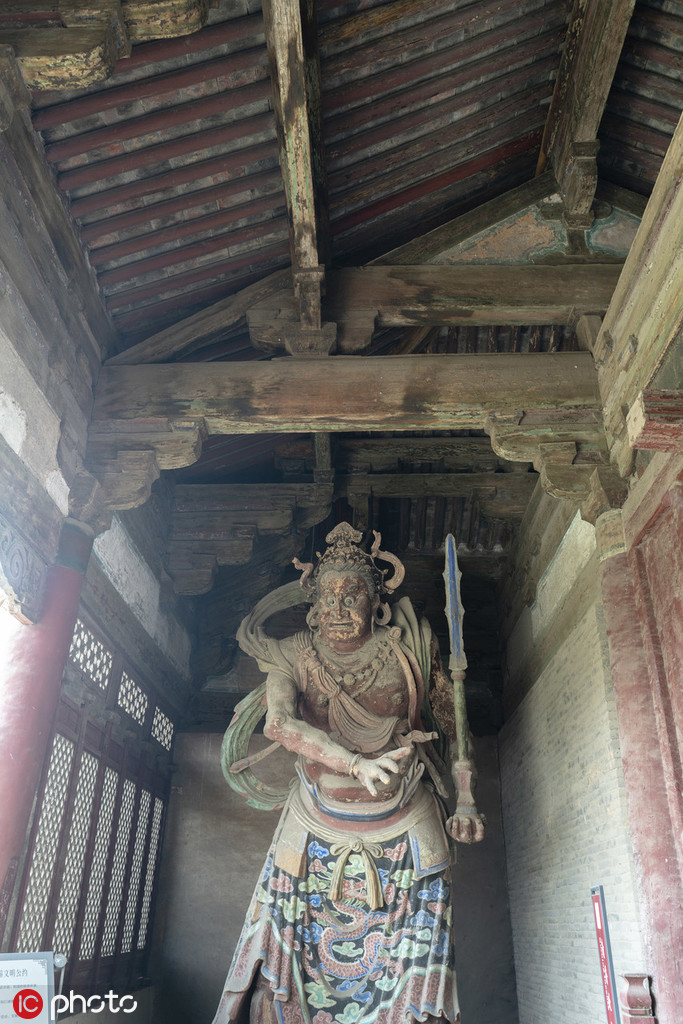
The hip roof (wudian ding) - with five ridges and four slopes - is a special roof design of Chinese architecture inherited from the Tang Dynasty or even earlier. The fin-shaped ornaments on either end of the roof ridge, called chiwei, are a symbol of the social prestige of the structure’s owner. Later modification of it features a dragon head biting the ridge with jaws wide open. Chinese legend has it that the chiwei, with the shape of a mythical animal, is one of the nine sons of the dragon. It embodies nobility and has the power of extinguishing fire and relieving disaster.
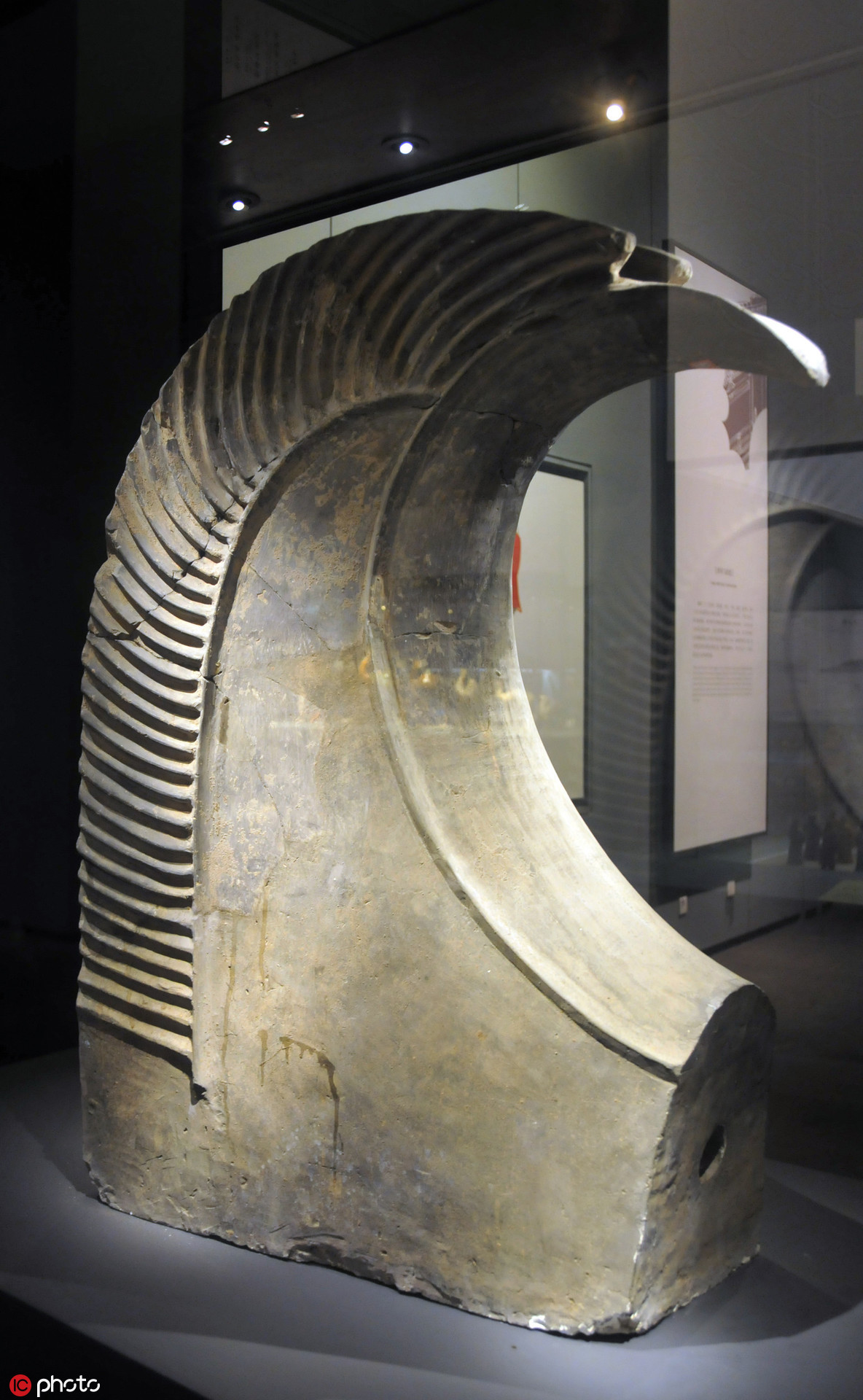
Belvedere of Avalokitesvara
Ingenious deign: The building looks like a two-storey structure from the exterior, but actually it has three stories, as the second floor is a mezzanine without windows or eaves.
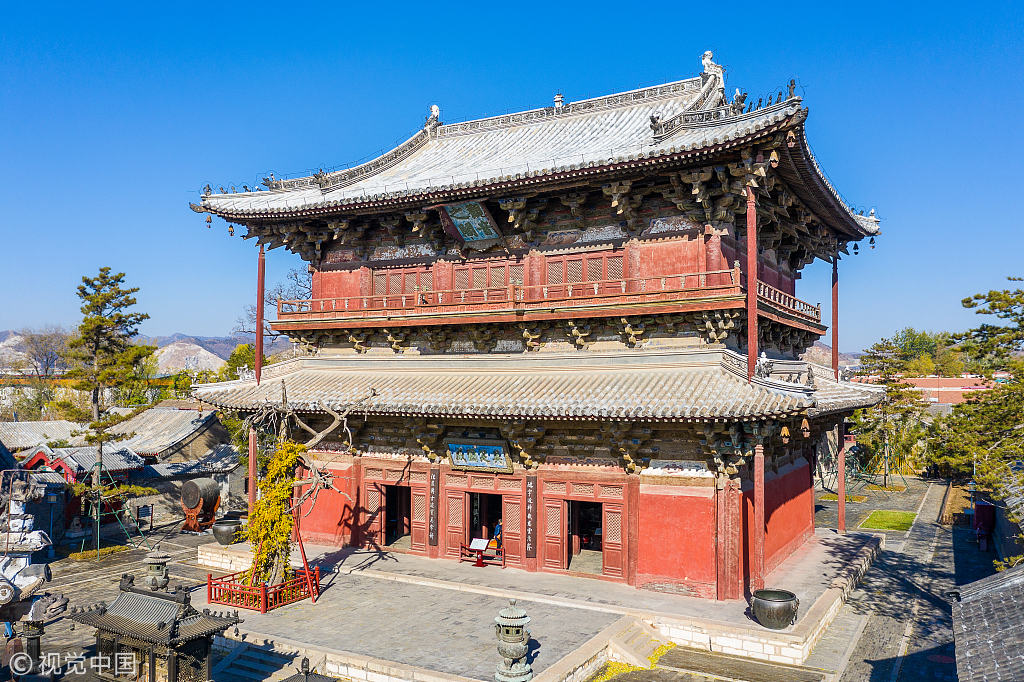
In traditional architectural terms, the building is five bays in width and four bays in depth. A bay (jian) - the space between two neighboring posts - is the basic unit used to measure the size of a given building.
The belvedere is 23 meters high, accommodating a 16-meter-high clay statue of Avalokitesvara (Guanyin) standing on a pedestal, her head almost reaching the top of the ceiling.
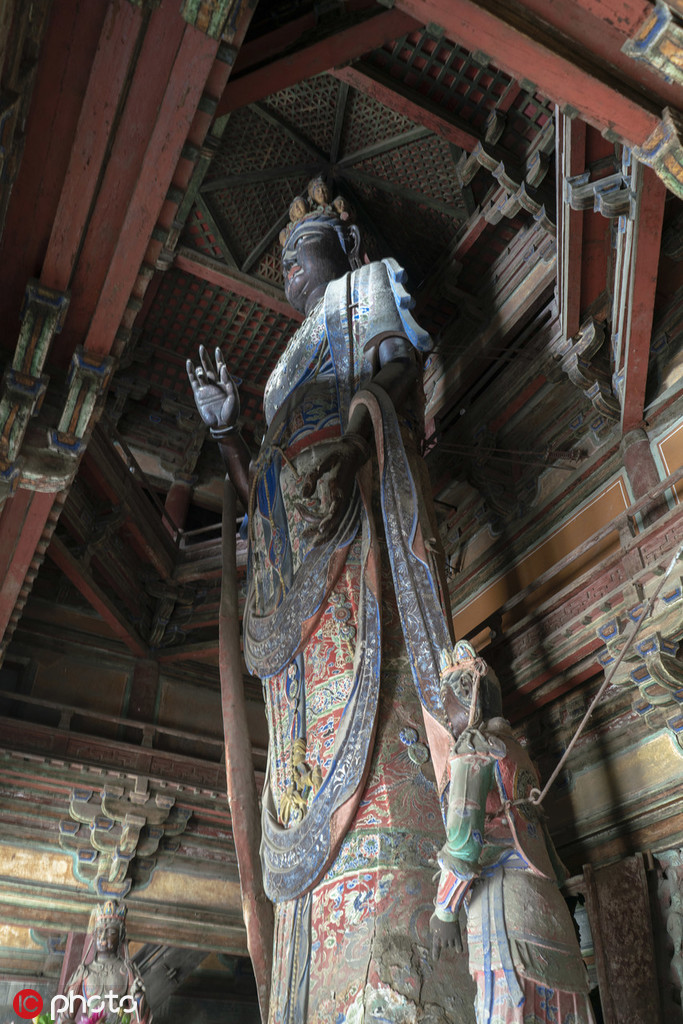
The entire structure of the belvedere consists of three tiers of "superposed orders". Bracket sets, beams, lintels, and columns interplay with each other to form an inner space. The two upper floors are built around the lofty statue with a coffered vault in the middle, forming galleries around the Avalokitesvara's hip and chest.
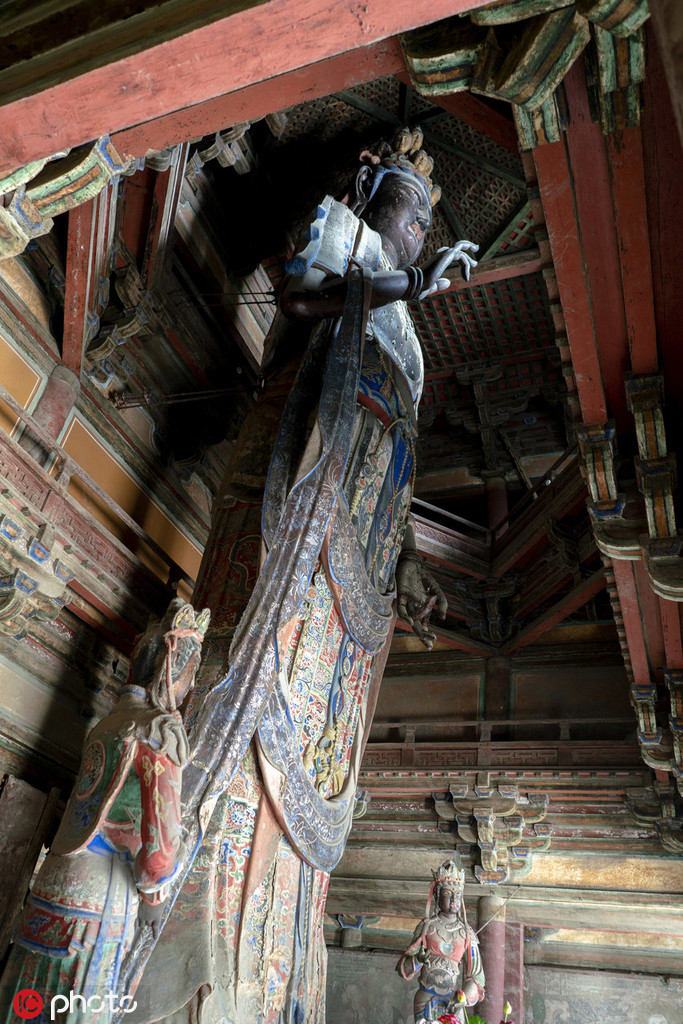
Archaeologists say that the three statues - the Avalokitesvara and its two attendants - are all dated to the Liao, which indicates that the Temple of Solitary Joy has been fairly-well preserved throughout history.
The belvedere has good earthquake resistance: the ten hypostyle columns and the eighteen peripteral columns were laid out scientifically on a very solid foundation. They are joined together by timbers at the bottom and on the top to form a stable frame. More than 1,000 years have passed and the belvedere is still standing firmly, having survived many major earthquakes. The Great Tangshan Earthquake in 1976 had a devastating impact onJixian county not far away, but the Temple of Solitary Joy showed quite good seismic resistance.
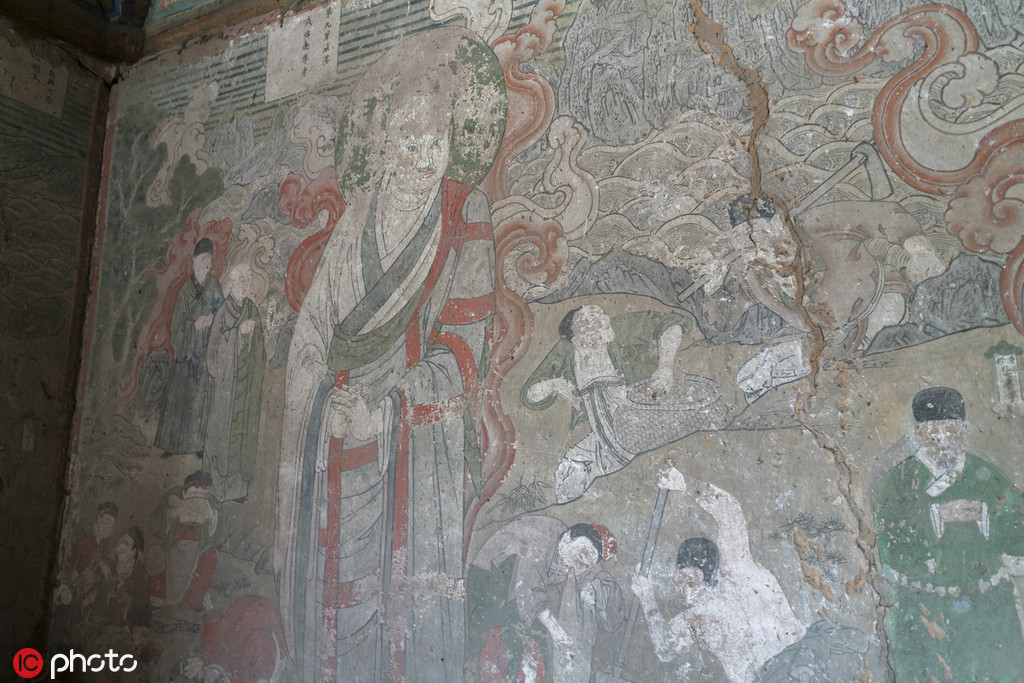
Features
 Museum Treasures
Xianyang's bronze warrior head is unique national treasure
Museum Treasures
Xianyang's bronze warrior head is unique national treasure
 Cultural Industry
New horse mascots gallop into 2026
Cultural Industry
New horse mascots gallop into 2026


